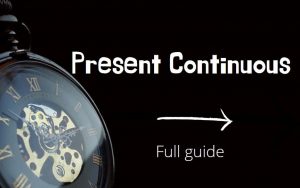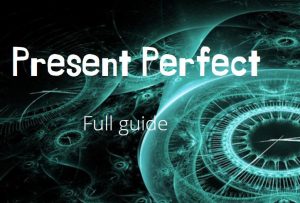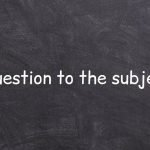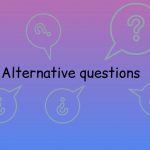The Past Perfect Continuous is one of the rarest tenses in the English language.
We rarely use the Past Perfect Continuous in spoken English. We most often replace the Past Perfect Continuous with the Past Perfect or the Past Simple.
We mainly use the Past Perfect Continuous in writing, in literature.
We use the Past Perfect Continuous to express an action that started in the past, lasted for a while and ended or did not end, and continues at some specified moment in the past.
What is Past Perfect Continuous?
The Past Perfect Continuous is an analog of the Present Perfect Continuous. Only the Present Perfect Continuous is relevant to the present, to the moment of speaking. the Past Perfect Continuous refers to another event in the past.
I looked at him thinking about what he had been doing all those years …
How to form sentences
To form the Past Perfect Continuous, we need three required elements:
- The verb to have or rather its past form had. We use had regardless of who is the subject (with all persons) unchanged:
- I had
- He had
- She had
- It had
- We had
- They had
- You had
- The third form of the verb to be been. We also use been regardless of who is the subject (with all persons) unchanged:
- I had been
- He had been
- She had been
- It had been
- We had been
- They had been
- You had been
- The main verb with the -ing ending.
| base form | verb + ing |
|---|---|
| work | working |
| speak | speaking |
| jump | jumping |
| write | writing |
- work – working
- speak – speaking
- jump – jumping
- write – writing
By combining these three parts with the subject, we form a sentence in the Past Perfect Continuous:
We all knew we had been planning the strategy since 2018.
Now let’s see exactly how we would form positive sentences, questions, and negations.
How to form Affirmative (Positive) Sentences in Past Perfect Continuous
To form a Positive sentence, we put the subject first. After the subject, we put the past form of the verb to have had. Then the third form of the verb to be been. Then the main verb with the -ing ending. After that, we can add the rest of the sentence if needed.
Subject (I, he, we, Jessica, people, dog) + had + been + main verb with the -ing ending (running, talking, working) + rest of the sentence.
The police had been looking for him at his house to arrest him and they got him!
How to form Interrogative (Question) Sentences in Past Perfect Continuous
To ask a question, we put had at the beginning of the sentence. Then we add the subject. Then the third form of the verb to be been. Then the main verb with the -ing ending. Then the rest of the sentence, if necessary.
had + subject (I, he, we, Jessica, people, dog) + been + main verb with the -ing ending (running, talking, working) + rest of the sentence.
Had you been waiting before we arrived?
Please note that to ask a question, we put had in front of the subject. Only the had is the auxiliary verb. We do not put had been.
Incorrect: Had been you waiting before we arrived?
Correct: Had you been waiting before we arrived?
How to ask Wh-Questions
To ask a Wh-Question, we use the same formula, but at the beginning, we put additional question words or phrases:
Question word or phrase + had + subject (I, he, we, Jessica, people, dog) + been + main verb with the -ing ending (running, talking, working) + rest of the sentence.
How long had you been waiting before we arrived?
How to Answer questions
To know how to correctly answer a question in the Past Perfect Continuous, look at the following diagrams:
Short positive answer.
Yes + subject (I, he, we, Jessica, people, dog) + had
Question: Had you been in that building before?
Answer: Yes, I had.
Short negative answer.
No + subject (I, he, we, Jessica, people, dog) + had + not
Question: Had you been in that building before?
Answer: No, I had not.
In a full answer, we add the main part of the question in the affirmative (positive) or negative:
Full positive answer.
Yes + subject (I, he, we, Jessica, people, dog) + had + been + the main part of the question in the affirmative
Question: Had you been in that building before?
Answer: Yes, I had been in that building (before).
Full negative answer.
No + subject (I, he, we, Jessica, people, dog) + had + not + been + the main part of the question in the negative
Question: Had you been in that building before?
Answer: No, I had not been in that building (before).
How to form Negative Sentences in Past Perfect Continuous
To form a negative sentence, we put the subject at the beginning of the sentence. After the subject, we put had and the negative not. Then the third form of the verb to be been. Then we put the main verb with the -ing ending.
Subject (I, he, we, Jessica, people, dog) + had + not + been + main verb with the -ing ending (running, talking, working) + rest of the sentence.
We had not been working together for very long.
Important: Please note that we put the negative not after the verb had. Had plays the role of an auxiliary verb in the Past Perfect Continuous. We don’t put not after been.
Correct: We had not been working together for very long.
Incorrect: We had been not working together for very long.
Abbreviations you must know!
We contract had in affirmative (positive) sentences and had not in negative sentences.
Contraction in Positive sentences:
| Full | Short |
|---|---|
| I had been | I’d been |
| He had been | He’d been |
| She had been | She’d been |
| It had been | It’d been |
| We had been | We’d been |
| They had been | They’d been |
| You had been | You’d been |
- I had been – I’d been
- He had been – He’d been
- She had been – She’d been
- It had been – It’d been
- We had been – We’d been
- They had been – They’d been
- You had been – You’d been
Contraction in negatives:
| Full | Short |
|---|---|
| I had not been | I hadn’t been |
| He had not been | He hadn’t been |
| She had not been | She hadn’t been |
| It had not been | It hadn’t been |
| We had not been | We hadn’t been |
| They had not been | They hadn’t been |
| You had not been | You hadn’t been |
I had not been – I hadn’t been
He had not been – He hadn’t been
She had not been – She hadn’t been
It had not been – It hadn’t been
We had not been – We hadn’t been
They not had been – They hadn’t been
You had not been – You hadn’t been
Stative verbs
We do not use the Past Perfect Continuous with stative verbs, just like we do not use all other Continuous tenses with such verbs.
Stative verbs are verbs that describe feelings, emotions, states, thought processes such as:
- to love
- to wish
- to want
- to hate
- to like
etc.
Such verbs most often look ridiculous if you add the -ing ending to them.
I had been wanting it.
We don’t need to add -ing to these verbs, because state verbs don’t need to express duration.
For state verbs, we use the Past Perfect instead of the Past Perfect Continuous.
I had wanted it.
Continuous actions
Look at the verbs Learn, Work, Live.
Such verbs describe actions that usually mean continuous actions and often take a long period.
Therefore, most often it does not matter if we use them in the Past Perfect or the Past Perfect Continuous.
Before quitting his job, John had worked at the factory since 2007.
Before quitting his job, John had been working at the factory since 2007.
These sentences have the same meaning. It doesn’t matter if we used the Past Perfect or the Past Perfect Continuous. Because the verb to work already mean that these were progressive process.
When do we Use Past Perfect Continuous?
There are not many cases when we use the Past Perfect Continuous.
- We use the Past Perfect Continuous to answer a question with “how long“. When the purpose of the question is to find out how long the action lasted.
He looked very skillful. How long had he been driving a car?
- We use the Past Perfect Continuous when we describe an action that began in the past, lasted for some time until another specified moment or action in the past.
We often indicate such a second action or moment using the Past Simple. To make it clear exactly how long the action described in the Past Perfect Continuous lasted, we use words and expressions such as: for 10 minutes, for 1 month, etc.
They were curious, about what I had been writing for last month.
- We use the Past Perfect Continuous to emphasize the duration of an action that began, lasted, and ended or did not end in the past. Or if the result of such an action influenced another event in the past.
I got sweaty because I had been running around all day.
- We use the Past Perfect Continuous to describe a continuous action in the past, the result of which caused another action that began after.
Mother was angry at Dad because she thought Dad had been working too hard.
What is the difference between Past Perfect Continuous and Past Perfect?
English learners often cannot understand the difference between the Past Perfect Continuous and the Past Perfect.
- We use the Past Perfect if an action in the past ended before the start of another action or a specified moment in the past.
If the action in the past continued at the moment when another action began, then it is better to use the Past Perfect Continuous. Because the Past Perfect Continuous emphasizes the duration of the first action.
I looked at the sky, I was surprised that it had been raining for seven full days!

- We use the Past Perfect when we talk about one-time actions in the past and we say how many times these actions have occurred.
Because the Past Perfect Continuous expresses a process and not one-time actions that were interrupted and happened again.
I was bored because I had watched the movie three times in a row.
I was tired because I had been watching the movie for three hours.
- If we use non-continuous verbs in a sentence (verbs that describe thought processes, feelings, states: think, love, desire, believe, envy, etc.). then we use the Past Perfect.
Because we don’t use non-continuous verbs with the -ing ending.
I had loved him.
- We use the Past Perfect Continuous if we are talking about an action that began in the past and ended or continued at the moment when another action began in the past and we indicate how long the first action lasted.
Ross and I had been working together for the last 10 years before he said he was quitting.
What is the difference between Past Perfect Continuous and Past Continuous?
What is the difference between the Past Perfect Continuous and its relative the Past Continuous?
We use the Past Continuous to describe an action that happened, lasted for a specific moment in the past.
John was reading a book yesterday at 10 am.
In this example, we use the Past Continuous to describe that John was reading a book at 10 pm yesterday. We focus on what John was doing at a particular time.
When we use the Past Continuous we focus on what is happening at the specified time. We don’t focus on how long the action takes. We do not focus on whether the action is completed or not.
We use the Past Perfect Continuous when we express an action that started in the past, lasted for a while until another moment in the past. And then it ended or did not.
Yesterday, when Jessica came home, John had been reading the book for 2 hours.
In this sentence, we use the Past Perfect Continuous. Because in this example we are not talking about what happened at a particular moment in the past. We emphasize that the action lasted until a certain moment in the past.
John was reading a book at 10 a.m. yesterday.
In this example, it is important to show what exactly happened at a moment in the past. This moment is “10 a.m. yesterday“.
Yesterday, when Jessica came home, John had been reading the book for 2 hours.
In this example, it is important to show that the action lasted for some time even before the moment we indicated in “Yesterday when Jessica came home.” Perhaps Jessica saw that John did not do what he promised to do because he read for a long time.
If you want to say that something is happening at a particular moment in the past, then use the Past Continuous. If you want to focus on where the action began and lasted until some point in the past, then you can use the Past Perfect Continuous.
Yesterday when Jessica came home John was reading a book.
This means that when Jessica entered the apartment, John was sitting with a book and reading.
Yesterday, when Jessica came home, John had been reading the book for 2 hours.
This means that by the time Jessica entered the apartment, Jack had been reading the book for 2 hours. But IT DOESN’T NECESSARILY MEAN that John was reading the moment Jessica entered the apartment.
Markers of Past Perfect Continuous
The Past Perfect Continuous markers are words and expressions that show from what moment the action began, how long it lasted, and by what moment it ended:
- since 2 o’clock
- since last month
- since last year
- since 2001
- before
- till
- until
- all morning
- the whole evening
- all-day
- the whole day
- all week
- the whole week
- all month
- the whole month
- all year
- for an hour
- for 3 hours
- for a day
- for 2 weeks
- for a month

Examples of sentences
Take a look at examples of the Past Perfect Continuous. These examples will help you understand the lesson.
By your age, I had been working for six years.
I had been looking for it for two months.
It had been raining for seven full days.
He had been talking so much about you.
What had you been doing with your life?
We had been running our own company for several years.
I had been studying it day and night.
I had been working on it for weeks.
Hello! If you would like to thank me for the articles I wrote, you can click Buy me a coffee. Thank you! ❤❤❤










